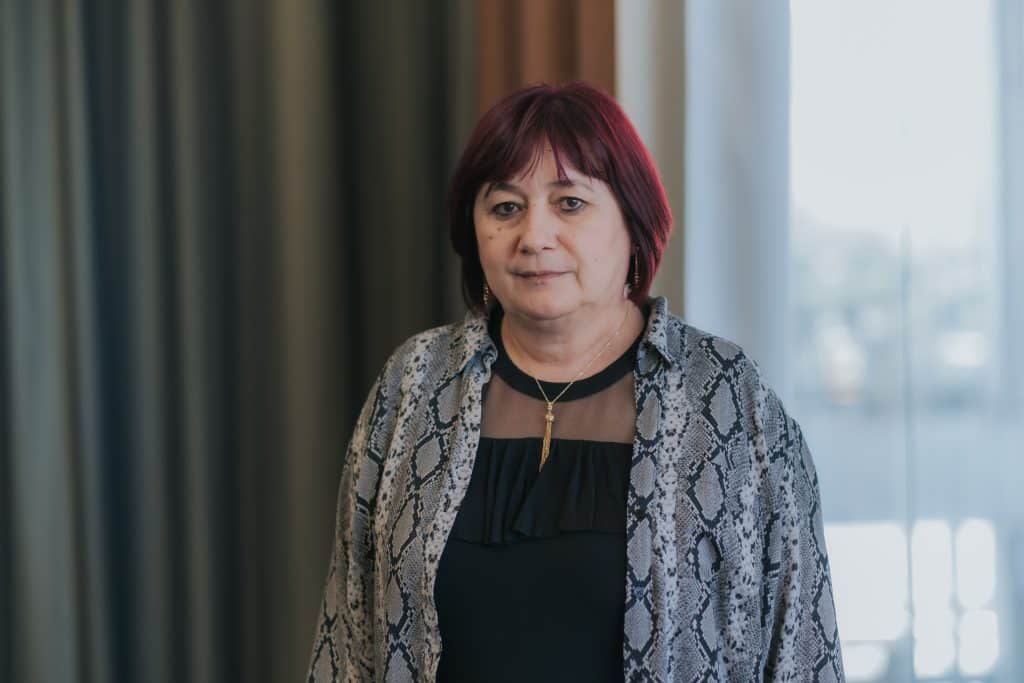My name is Dorica Dan. I’m from Romania, and I serve as the President of the Romanian Prader-Willi Association (RPWA)—my daughter has Prader-Willi Syndrome. I’m also the President of the Romanian National Alliance for Rare Diseases (RONARD) and the Romanian Rare Cancers Association. In addition, I am currently Vice-President of EURORDIS – Rare Diseases Europe.
My main area of expertise is integrated care for people living with rare diseases. I believe patients need a holistic approach—encompassing medical care, social care, and special education services. I’ve been deeply involved in promoting and developing structures that provide this kind of comprehensive support.
The term “holistic” might be confusing for some, as it can mean many things. What do you mean when you say “holistic care for patients with rare diseases”?
To me, holistic care means having one-stop-shop services where patients can receive medical, social, and educational support all under one roof. They are provided with information on how to coordinate their care, are connected to any additional services they require, and the approach involves the entire family—not just the patient. Rare diseases affect the whole family, so we offer counselling, psychological support, peer support, and we promote family resilience. Families are the primary caregivers, so supporting them is crucial.
How challenging has it been to incorporate this comprehensive, integrated approach into existing institutions and organisations—to raise awareness of the need for such care?
We don’t yet have a specific policy framework for integrated care in Romania, and in fact, very few countries do. To provide holistic care for our patients, we’ve had to accredit our services across multiple categories: social services, medical services, continuing medical education, and adult education.
Together with our colleagues from Norway, Sweden, Spain, Portugal, and Croatia, we formed a European network of resource centres dedicated to providing holistic care. That is how we address integrated care for our patients.
You’ve personally experienced this journey with your daughter. Could you share a bit of that experience, and how it led you to conclude that this broader support network was necessary?
Yes. My daughter, Oana, is now 40 years old. She was born with Prader-Willi Syndrome, although we didn’t receive an accurate diagnosis until she was 18. We had always suspected that her initial diagnosis wasn’t correct. Still, we tried to respond to the consequences of her condition as best we could—through rehabilitation and by integrating her into kindergarten and school, ensuring she had friends her own age.
This was during the communist period in Romania, before the Revolution, when we had no access to genetic testing. After the Revolution, I took a Montessori training course with Oana, and the teacher—who was from Sweden—mentioned she suspected Prader-Willi Syndrome. I had never heard of it, and there was no internet access at the time, so it took me a while to learn more. Eventually, an occupational therapist from Australia visited our city and confirmed that Oana’s features were consistent with Prader-Willi Syndrome. She brought us printouts from the internet, and I discovered the International Prader-Willi Syndrome Association.
We travelled to Italy for genetic testing, and at a conference there, I saw about fifty children with the same diagnosis. That’s when I was sure. Oana was officially diagnosed at 18.
We decided to start an association so others in Romania wouldn’t have to wait so long for a diagnosis. At first, I had no idea there were between 6,000 and 8,000 different rare diseases—imagine my shock! As with many parent-led NGOs, initially it was just me. I used to joke, “when Dorica is tired, I replace her,” because I was doing everything. But I was fortunate to meet many dedicated people in the rare disease field and learned a great deal from them.
Your daughter was 18 at the time of her diagnosis, and now she’s 40. During these years, a lot of structural support has been built for people with rare diseases in Europe. From your perspective, how have these developments helped?
Structuring the system benefits everyone, including my daughter. It’s very important for people to know where to go for support—even when there’s no treatment. In 95% of rare diseases, there is no treatment available anywhere in the world. But knowing there’s a place where someone will listen, understand, and guide you towards what’s best for your child is invaluable. That’s what our centre aims to do: we listen to patients’ needs and do our utmost to support them.
Romania doesn’t have the best medical infrastructure, but we created networks—“networks of networks,” really—linking professionals, patient organisations, and service providers. There’s still a great deal more to be done, but that structure is a significant step forward.
You mentioned the importance of an early diagnosis—not just for potential treatments, but also to avoid unnecessary interventions or surgeries. What do you see as the main benefits of data-sharing initiatives or networks in achieving earlier diagnosis?
Early diagnosis is vital to avoid wasting time and prevent unnecessary interventions or surgeries. We’ve seen patients who were misdiagnosed and underwent procedures they didn’t need. The sooner a correct diagnosis is given, the sooner proper intervention, rehabilitation, and connection with experts and other families can begin. For families, it means less waiting and uncertainty. So, if data-sharing initiatives help accelerate diagnosis, that’s a major benefit.
What do you think are the biggest misconceptions people have about rare diseases or the lives of those affected?
One major misconception is that people with rare diseases are “so few”. When you explain that there are many rare disease patients at national and international levels—and that entire families are affected—the numbers become much more significant.
Another misconception, especially among healthcare authorities, is that rare diseases are extremely expensive to manage, and that if they cannot always be cured, the investment is not “worth it”. We must challenge that idea, particularly when budgets are limited.
It’s also difficult to convey that many rare diseases involve severe disabilities—often more complex than common disabilities. We don’t want to exclude rare disease patients from mainstream services, but those services need to be adapted to meet their specific needs.
From your professional perspective, what are the biggest institutional or systemic challenges in studying and treating rare diseases?
The biggest challenges lie in the diagnostic process and education. Rare diseases are poorly covered in medical school curricula; there’s no dedicated module. This gap extends to psychologists and social workers as well.
Another problem is that patient pathways are not clearly structured, and communication between medical, social, and educational services is weak. Cross-sector collaboration is essential. Funding is also a significant issue. While many countries have national plans for rare diseases, they may be outdated or inadequately financed.
In Romania, our new National Plan for Rare Diseases is theoretically integrated into the National Strategy for Health, and for the first time, there is some funding available, which is encouraging. But we also need professionals to be recognised and fairly compensated for their work with rare disease patients. These patients often need more consultation time and coordinated, interdisciplinary care.
Healthcare professionals may need to consult experts abroad. That extra effort is often neither recognised nor funded in many health systems. Many resources are missing, and existing strategies are not always sufficiently holistic.
Finally, how do you see European collaboration evolving in this area, especially as initiatives like ERDERA begin to take shape?
I believe the European Reference Networks were a fantastic starting point. They’ve brought together patients and experts, fostering collaboration and knowledge exchange. For research and early diagnosis, cooperation among all EU Member States—and ideally countries beyond the EU—is crucial.
It gives people living with rare diseases hope: that they’ll be diagnosed sooner, and integrated into appropriate services more quickly. We need collective effort—sharing resources, expertise, and data—to improve the lives of patients and their families.
Pictures courtesy of Dorica Dan and EURORDIS – Rare Diseases Europe.

